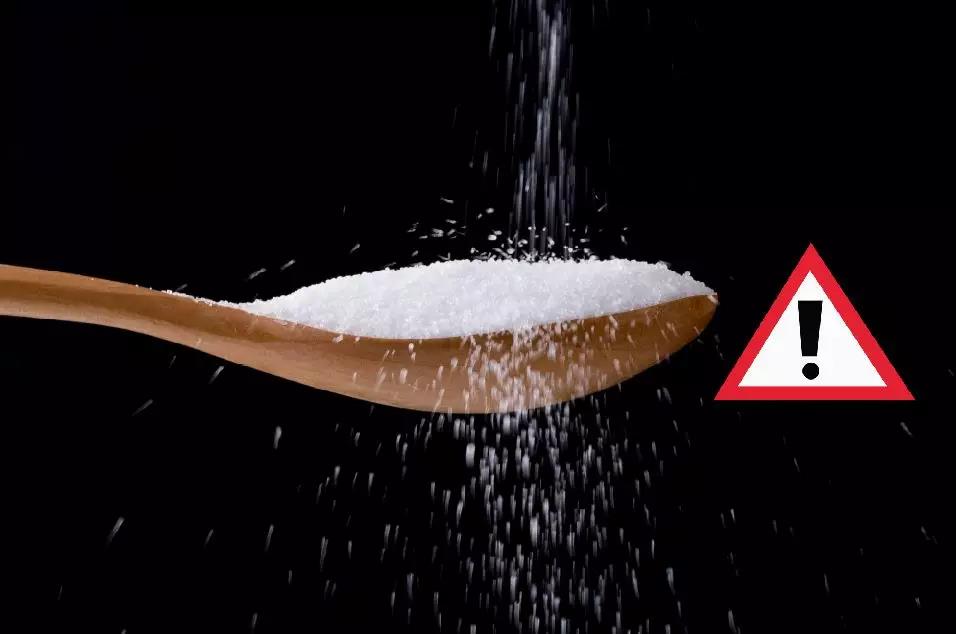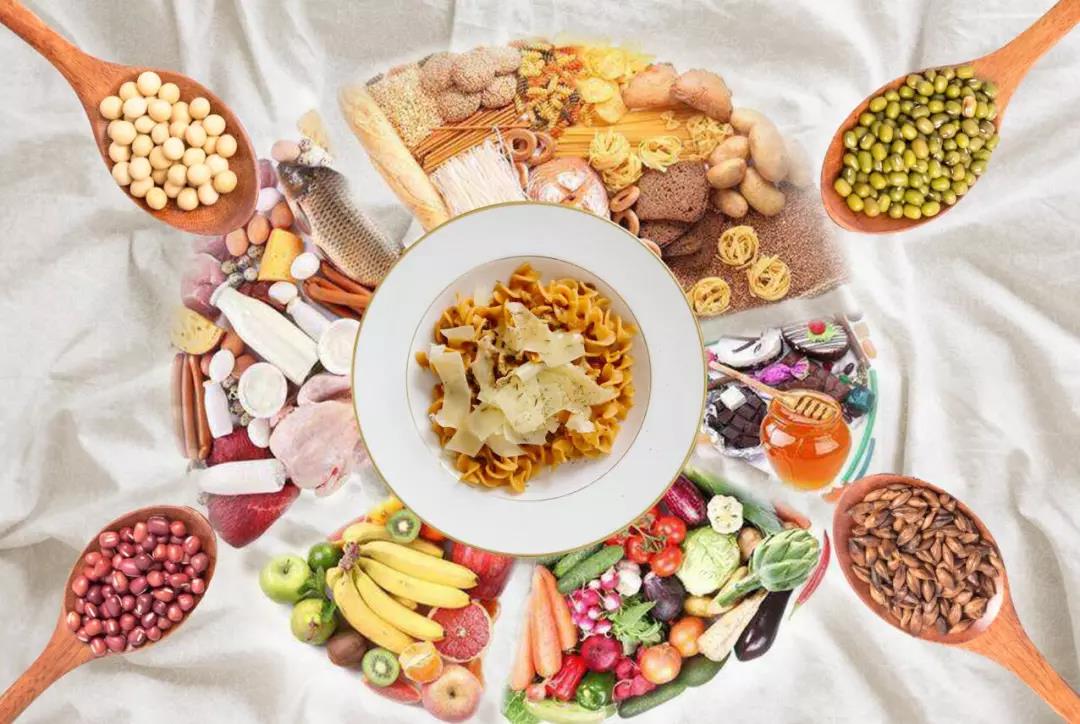By Jeremy Xiong
1. CHINA IS ONE OF THE WORLD'S TOP SALT CONSUMING COUNTRIES IN THE WORLD[1]

Appropriate intake of salt is necessary to maintain a healthy living. As we all know, sodium chloride comprises 99% of table salt, sodium ions are necessary for regulation of blood and body fluids, transmission of nerve impulses, heart activity, and certain metabolic functions. Studies show that the average of daily salt intake among 18 years old Chinese has reached to 10. 5g[2], which far surpasses Dietary guidelines for the Chinese's recommendation of 6g per day, even twice more than the World Health Organisation's recommended intake of less than 5g per day.
2. SIDE EFFECTS OF TOO MUCH SALT INTAKE
High intake of sodium(salt) is harmful to cardiovascular, stomach and other organs. According to statistics, in 2013, nearly 12. 6% of deaths in China is attributed to high-sodium diets[3].
High Blood Pressure
Hypertension has been named as the invisible killer of human being's health. It is an important factor for cardiovascular and cerebrovascular diseases. It has been reported that the number of population suffering from high blood pressure problem worldwide has been reached to 300 million in 2015, two-thirds of them come from developing countries; this number is estimated to be 1. 56 billion by 2025[4].
Statistics from clinical studies show that salt intake of 10 g per day can adversely affect blood pressure and increase the hypertension risk by 8. 6%, 26 g per day of salt intake will increase the incidence rate by 39%. The incidence of hypertension in Chinese population shows a growing trend, when the daily salt intake increases 2g per capita will increase the top blood pressure reading(systolic) about 2 mm of Hg, and the lower blood pressure reading(diastolic)1. 5 mm of Hg[5].
Studies have found that the aborigines on the Pacific Islands have been accustomed to a virtually no-salt diet, and there are almost no hypertension cases reported.[5] And Eskimos who are consuming an average of less than 4 g of salt per day show no hypertension cases as well. In contrast, the average salt intake among residents in Hokkaido reaches as high as 15-20 g per day, even 26-55 g per day, which results in a high incidence of hypertension up to 84%. [6] Lowering daily salt intake to 6g for a long-term can help reduce the lower blood pressure reading(diastolic) to 1200 Pa, and rates of mortality from coronary heart disease can be decreased to 16%[7].

Stomach Disease
Excessive intake of salt will increase the osmotic pressure of stomach lining, and contributes to mucous membranes congesting, swelling and bloating. It leads to a high risk of gastritis, stomach ulcer, and other diseases.
A Swedish study shows that excessive salt intake stimulates the stomach to produce large amounts of stomach acids. Those who ate a high-salt diet have a 70% higher risk of incidence of stomach diseases than those who ate a light diet. In addition, there is a close relationship between chronic Helicobacter pylori infection and salt intake. Chronic high salt intake can damage the lining of your stomach, making it more susceptible to infection by Helicobacter pylori, a bacterium that can cause inflammation and stomach cancer[8].
Osteoporosis
Studies have shown that the more sodium you consume, the more calcium you excrete with your urine, and the less calcium you absorb. For every 2300 mg of sodium excreted by the kidney, approximately 26 mg of calcium is lost. The more sodium you excrete, the more calcium is lost. This will affect the calcium levels and the health of bones, and put you at a higher risk of getting osteoporosis[9].
Kidney
Most of the excess sodium is excreted by the kidney. A high-salt diet can cause an increase in renal blood flow and glomerular filtration rate, increasing the burden of glomeruli and the rate of renal function damage. It is more important to limit the salt intake for kidney patients, as it will aggravate symptoms for those who are prone to swelling[10].
Respiratory Disease
High concentration of salt can inhibit the activity of respiratory tract cells, break the balance of normal respiratory flora, and inhibit its disease resistance. Meanwhile, it can reduce saliva, oral lysozyme, and increase the risk of upper respiratory tract infection of viruses and bacteria. Excessive salt also increases the reactivity of bronchial smooth muscles. Thus, a high-salt diet may exacerbate asthma. Moderating the salt intake can improve symptoms of asthma[11].
3. SODIUM INTAKE MAINLY COMES FROM PROCESSED AND RESTAURANT FOOD
In 2016, a diet study of Dr. Wu Yongning, the Chief scientist of the China National Centre for Food Safety Risk Assessment, has shown that the salt consumption in China has declined in 2002-2012, but there is no obvious decline of the total sodium consumption. In 2002, the sodium intake in rural areas was higher than that in urban areas, while the data from 2010 to 2012 showed that the sodium intake in urban areas was higher than that in rural areas, which may be linked to their high consumption of processed and restaurant food. This work was published in The Journal of the American Medical Association (JAMA®).
European and American studies have proved that 5-10% of sodium sources in consumption comes from home cooking, 5-10% comes from natural food itself, and up to 80% comes from processed and restaurant foods[12].
Growing concern on health and understanding of the main sources of salt among consumers have attracted widespread attention from governments. Since the 1970s, “Salt reduction campaign” has been launched around the world, especially towards the food industry, which further promotes the food companies to reduce salt content.

| Published by Jeremy Xiong Senior Engineer of Angel Yeast Extract Division |
References:
[1][2] http://AAANNNGGGEEELLLaGVhbHRoI2h1YW5xaXUjY29tAAANNNGGGEEELLL/health_news/2018-04/11887594.html
[3] Liu Min, Burden of Disease Attributable to High-sodium Diets in China, 2013. China J Prev Med, September 2016, Vol.50. No.9
[4] Kearney P M , Whelton M , Reynolds K , et al. Global Burden of Hypertension: Analysis of Worldwide Data[J]. The Lancet, 2005, 365(9455):217-223.
[5] Ahmed, N, Abdul, Khaliq, M, Shah, SH. Compliance to antihypertensive drugs, salt restriction, exercise and control of systemic hypertension in hypertensive patients at Abbottabad. J Ayub Med Coll Abbottabad 2008; 20: 66–69.
[6] Khosravi, A, Kelishadi, R, Sarrafzadegan, N. Impact of a community-based lifestyle intervention program on blood pressure and salt intake of normotensive adult population in a developing country. J Res Med Sci 2012; 17: 235–241.
[7] Zefeng, Zhang,Mary E, Cogswell,Cathleen, Gillespie,Jing, Fang,Fleetwood, Loustalot,Shifan, Dai,Alicia L, Carriquiry,Elena V, Kuklina,Yuling, Hong,Robert, Merritt,Quanhe, Yang. Association between usual sodium and potassium intake and blood pressure and hypertension among U.S. adults: NHANES 2005-2010. [J]. PloS one,2013,8(10):e75289.
[8] Beevers D G , Lip G Y , Blann A D . Salt intake and Helicobacter pylori infection[J].
[9](Mccarron D A , Rankin L I , Bennett W M , et al. Urinary Calcium Excretion at Extremes of Sodium Intake in Normal Man[J]. American Journal of Nephrology, 1981, 1(2):84-90.)Journal of Hypertension, 2004, 22(8):1475-1477.
[10][11] Shi Changlai, Wei Feng, The Function of Sodium, Potassium and Low Sodium[J], Journey of Salt and Chemical Industy, 2014, 43(2).
[12] http://AAANNNGGGEEELLLbmV3cyMxNjMjY29tAAANNNGGGEEELLL/10/0422/10/64S8FVDH000146BD.html
About Angel Yeast Extract-Savoury:
Angel YE (yeast extract) made from edible yeast, by degradation the protein and nucleic acid in the yeast cells into nutritional seasonings with the application of modern biotechnology, has the advantages of increasing the fresh flavor, reducing salt, balancing the odor, strong tolerance and food properties, which promotes the global healthy operation of salt reduction and "clean label ".
About Angel:
Angel Yeast Company is a high-tech listed company specializing in yeast and biotech. Product business covers Yeast and Baking, Yeast Extract-Savoury, Nutrition & Health and Biotechnology fields. It is one of the world's leading companies in the yeast industry. Angel has 12 holding subsidiaries and provides products and services for more than 150 countries and regions.
http://en.angelyeast.com/
Press Contact:
ANGEL YEAST CO.,LTD
Address: 168 Chengdong Avenue, Yichang, Hubei 443003, P. R.China
Tel: +86-717-6369520, 6369558
Fax: +86-717-6370680
Email: yefood@angelyeast.com





